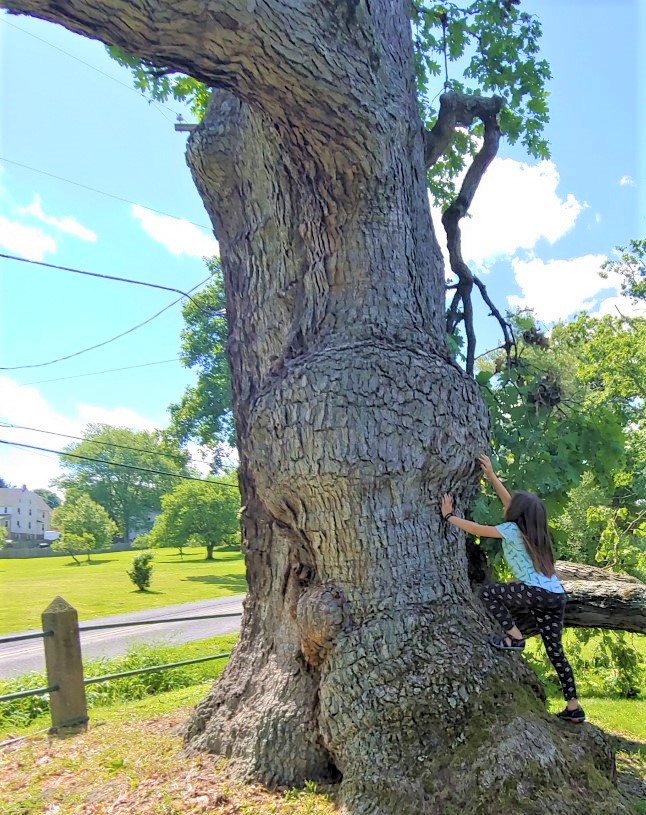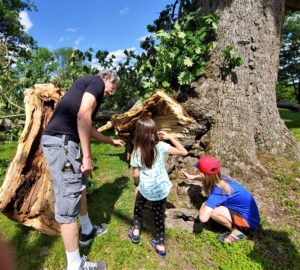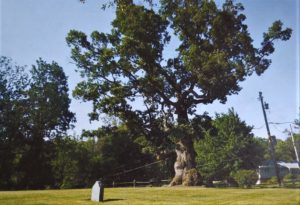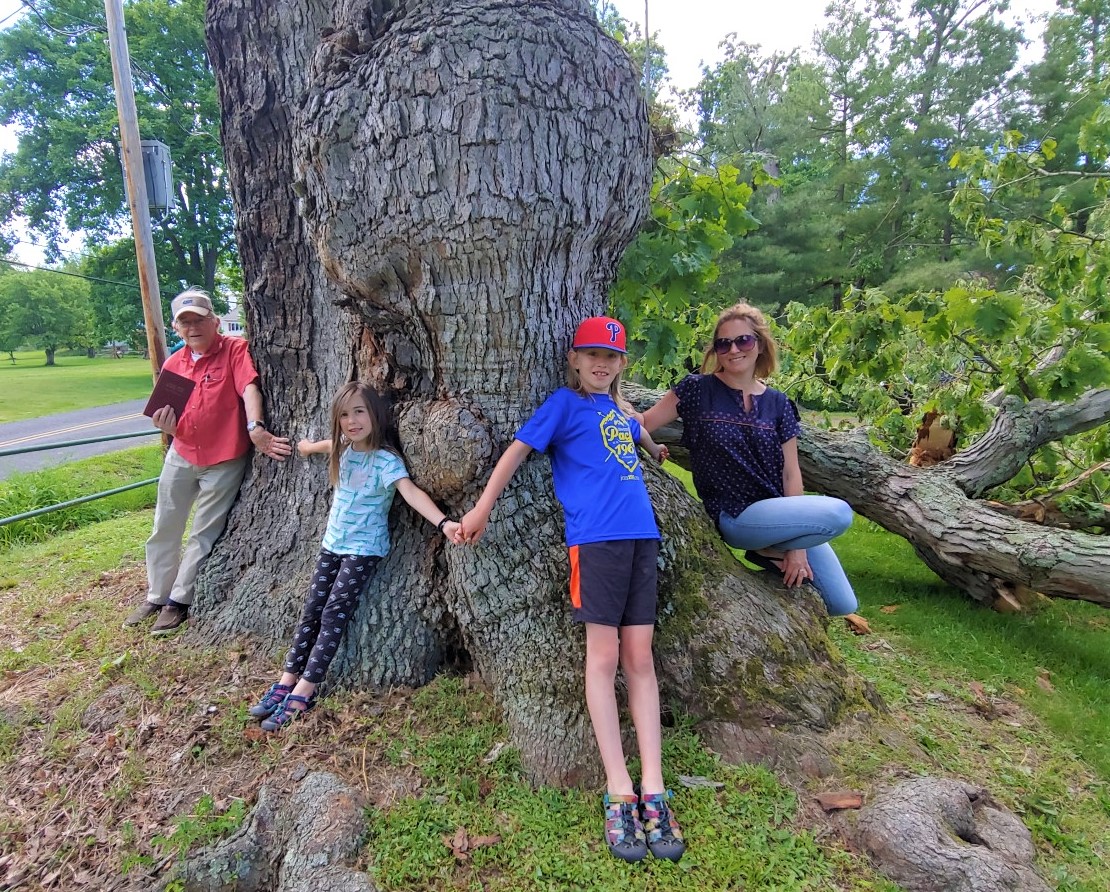Storm ravages the last of Bucks County’s oak trees that sprouted in William Penn’s time.
Nature’s oldest living things have always intrigued me. Daughter Genevieve years ago sent us photos of her visit to the Joshua trees that are 1,000 years old in Southern California. I grew up in an area with Giant Sequoias 3,000 years old. They are precious to contemplate. How could they have survived so long?
Bucks County has its own big trees, all beloved in their time. We remember well the Columbus Oak in Solebury born about the time the explorer discovered America. Thus the name. Mary Anne and I married in the Thompson Memorial Presbyterian Church near the tree. Two weeks before Genevieve’s birth, I photographed the expectant mom under the bows of the magnificent tree. We’ve always admired the durability of white oaks. On our property, we have a 191-year-old white oak that started growing when John Quincy Adams was president. These ancient sentinels are always threatened by chain saws, disease, heavy wind and lightning. When a bolt struck the 500-year-old Columbus Oak in 1999, it completely fractured the grand monarch. The subsequent outpouring of grief was noteworthy. People gathered to mourn and gather acorns to propagate a new tree on site. A memorial marker was added later.

All of this brings to mind the Penn Oak, believed to be the last of Bucks County’s living white oaks that started life around 1682 when William Penn arrived in Pennsylvania. For centuries, parishioners of Hilltown Baptist Church have protected the tree fronting the church graveyard on Chalfont Road. The tree and the church grew up together. Three weeks ago thunderstorms passing through Central Bucks ripped two massive arms from the tree. Bob Hardin, director of church facilities, wondered if the oak could be saved. He invited me and my family to the site for an up-close view of history and perhaps the end of the line for a natural icon. Margaux, almost 7, and Dashiell, 10, reached out to touch the 23-foot-circumference of the trunk near ground level, putting into perspective an ancient life force dating back 338 years.\
In the United States, white oaks have an average life span of 300 years but can live twice that age. Hilltown’s Penn Oak is a youngster on the ancient elder scale. In 1718, Rev. William Thomas and his family of Welsh immigrants purchased 400 acres including the Penn Oak from Jeremiah Langhorne for whom Langhorne is named. In 1737, Rev. Thomas built a log meetinghouse beneath the 57-year-old tree on the edge of what would become Chalfont Road. Since the minister was a woodworker by trade, he built all church furniture including a pulpit from a hollowed-out gum tree. An early etching shows him preaching with a musket leaning against the pulpit. According to church history, “It was customary for people to bear arms even to the House of the Lord for the land was still savage and no one knew when a band of hostile Indians might attack, bringing death, ruin or captivity.” Indeed, it was an era inflamed by Penn’s sons defrauding local tribes of their native lands in the Delaware Valley.

Rough, dangerous cart and horse trails convinced the congregation to establish a sister meeting house 3 miles away at Nace’s Corner to better serve the immigrant community. For years, ministers traveled between the Lower Baptist Church at its original location and the Upper Baptist Church. In subsequent years, the congregations were instrumental in establishing Point Pleasant Baptist Church in Tinicum Township.
Meanwhile, the Penn Oak at the original chapel continued its growth. A cemetery established behind the church and tree became the final resting place for 13 Revolutionary War soldiers plus Native Americans among others. Rev. Thomas, who is buried there, willed the 4-acre site to Hilltown Township government and decreed both “white and blacks” be buried there but not “Papists and Hereticks”.
The original log church gave way to a larger building in 1771. Seventy years later, serious decay motivated the congregation to close it, relocating to a single church at Nace’s Corner. In 1970, the church beneath the Penn Oak was dismantled and a memorial marker left in its place. The decades passed uneventfully until this month’s storm.

Two weeks ago, neighbors and church members cut up the downed limbs into firewood and cleaned up the site. The tree now looks perfectly healthy, capable of enduring another century or more by all indications. Fresh greenery on remaining branches testify to the tree’s continued endurance. On our visit, Margaux carefully examined what she called “bunny holes” at the base of the tree. Then she and her brother gathered acorns they placed in a growing pile in Mom’s awaiting hands to take home to sprout a new tree from the great mother white oak.
Sources include “A Walk Down Memory Lane” by Edna M. Lewis Loux published by the Hilltown Baptist Church in 1982, and “History of Bucks County, Pennsylvania” by William W.H. Davis published in 1905. To establish the age of your own trees, go to a simple calculator on the web at https://www.cliftonparkopenspaces.org/treecalculator/

